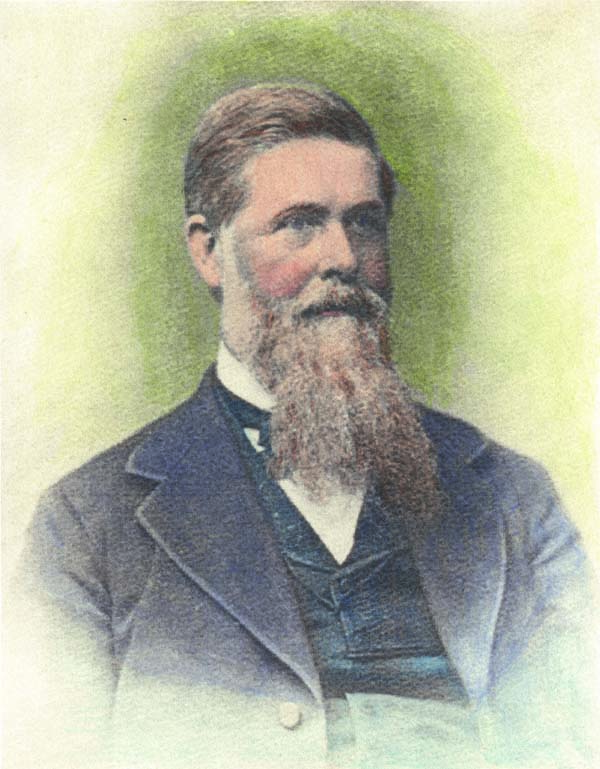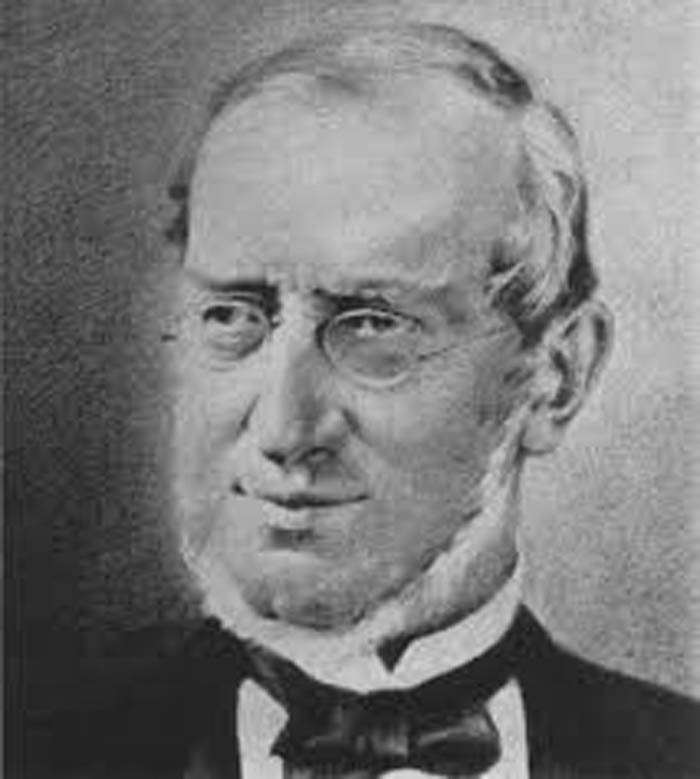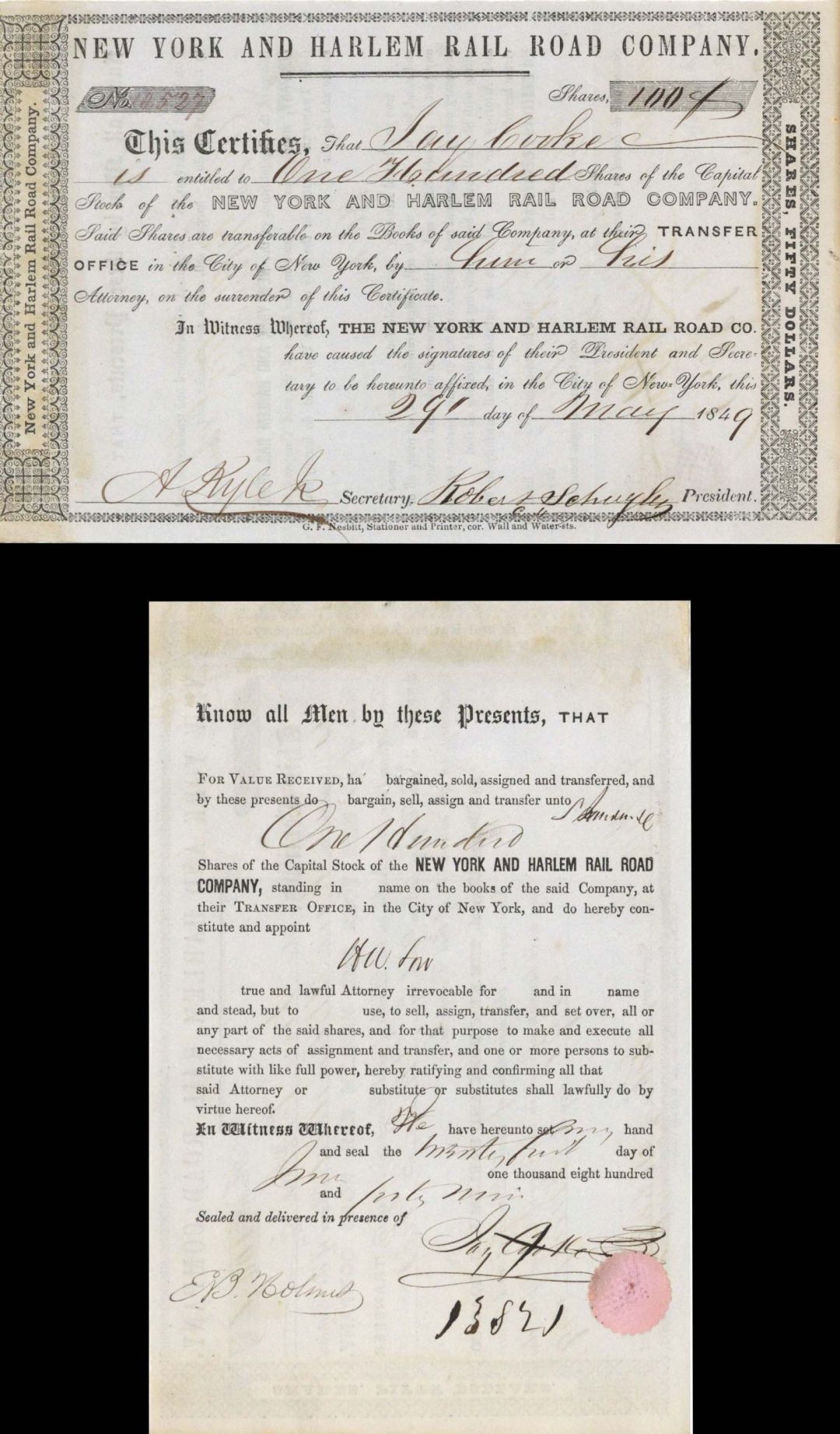New York and Harlem Rail Road Co. issued to and signed by Jay Cooke on back and Robert Schuyler dated 1849 - Autographed Stocks and Bonds
Inv# AG2752 StockStock issued to and signed on back by Jay Cooke and signed by Robert Schuyler as president.

Jay Cooke (1821-1905) Cooke received preliminary training in a trading house in St. Louis and in the booking office of a transportation company in Philadelphia at the age of 18. He entered the Philadelphia house of E.W. Clark & Co., one of the largest private banks in the country. Three years later he was admitted to membership in the firm, and before the age of 30 was also a partner in the New York City and St. Louis branches. In 1858 he retired from the firm, and for the next three years he devoted himself to reorganizing abandoned Pennsylvania railways and canals and placing them again in operation. In 1861, he opened the private banking house of Jay Cooke & Company and quickly floated a war loan of $3,000,000 for the state of Pennsylvania. In the early months of the American Civil War, Cooke collaborated with the secretary of the treasury Salmon P. Chase in securing loans from the leading bankers in the Northern cities. He influenced the establishment of national banks and organized a national bank at Washington and Philadelphia almost as quickly as Congress could authorize the institutions.
After the war, Cooke became interested in the development of the northwest, and in 1870 his firm financed the construction of the Northern Pacific Railway. Cooke fell in love with Duluth, Minnesota, and decided he must make it successful. He began purchasing railways with the dream of reaching the Pacific to bring goods through Duluth into the Great Lakes shipping system and on to the markets of Europe. In advancing the money for the work, the firm overestimated its capital, and at the approach of the Panic of 1873 it was forced to suspend. Cooke himself was forced into bankruptcy. By 1880 Cooke had met all his financial obligations, and through an investment in a silver mine in Utah, had again become wealthy.
The Junction Railroad was chartered March 2, 1846, to build from Cleveland west to Toledo. The Toledo, Norwalk and Cleveland Railroad was chartered March 7, 1850, to build from Toledo east to Grafton on the Cleveland, Columbus and Cincinnati Railroad. The latter company opened on January 24, 1853, finally forming a continuous Buffalo-Chicago line. On September 1 the two companies merged to form the Cleveland and Toledo Railroad, with the Junction Railroad becoming the Northern Division and the Toledo, Norwalk and Cleveland the Southern Division. The Northern Division opened from Cleveland west to Sandusky on October 24, 1853, and the rest of the way to Toledo on April 24, 1855. The Northern Division was abandoned west of Sandusky due to lack of business, but the track was relaid in 1872, merging with the Southern Division at Millbury, east of Toledo. In 1866 the Southern Division east of Oberlin was abandoned and a new line was built to Elyria on the Northern Division, ending the use of the Cleveland, Columbus and Cincinnati Railroad.
In October 1867, the Cleveland, Painesville and Ashtabula Railroad leased the Cleveland and Toledo Railroad. The CP&A changed its name to the Lake Shore Railway on March 31, 1868, and on February 11, 1869, the Lake Shore absorbed the Cleveland and Toledo. On April 6 the Michigan Southern and Northern Indiana Railroad and Lake Shore merged to form the Lake Shore and Michigan Southern Railway, which absorbed the Buffalo and Erie Railroad on June 22, giving one company the whole route from Buffalo to Chicago. The main route passed through Dunkirk, NY, Erie, PA, Ashtabula, OH, Cleveland, OH, Toledo, OH, Waterloo, IN and South Bend, IN. An alternate route (the Sandusky Division) in Ohio ran north of the main line between Elyria and Millbury (not all track was laid until 1872). From Toledo to Elkhart, the Old Road ran to the north, through southern Michigan, and the through route was called the Air Line Division or Northern Indiana Air Line. Along with various branches that had been acquired (see below), the Monroe Branch ran east from Adrian, MI to Monroe, where it intersected the leased Detroit, Monroe and Toledo Railroad. At some point the original line to Toledo was abandoned west of the branch to Jackson, MI (Palmyra and Jacksonburgh Railroad), with the new connection at Lenawee Junction, the crossing between that branch and the line to Monroe.

Robert Schuyler Few chieftains of American finance have fallen as far and as fast as Robert Schuyler. In the early 1850s Schuyler achieved fame as “America’s first railroad king,” then infamy as the perpetrator of its first massive stock fraud. By 1853 he had been president of five roads—the Illinois Central, New York and Harlem, New York and New Haven, Renssalaer and Saratoga, and Sangamon and Morgan—most of them simultaneously; he had been instrumental in building the Vermont Valley and the Washington and Saratoga, and in the promotion and administration of the Housatonic, Naugatuck, New Haven and Northampton, and Saratoga and Whitehall. A scion of a blue-blooded New York family that counted Alexander Hamilton among its ancestors, he was widely admired and trusted. Ironically, it was Schuyler’s wide-ranging involvements that proved his undoing. In his capacity as transfer agent of the New York and New Haven, beginning in October 1853 he issued some $2 million in unauthorized stock, diverting the proceeds to other railroad ventures he was juggling. In the past he had covered up similar over-issues on a much smaller scale by buying back and retiring the over-issued shares. This time, though, events spun out of his control; the irregularities became public at the beginning of July 1854, Schuyler fled to Canada under threat of arrest, then to Europe, where he died in disgrace in November 1855. Schuyler’s defalcations were genuinely sensational, sending shock waves through the realms of finance and high society; one contemporary reaction was that the “Schuyler fraud fell like a thousand bombshells, or hissed like a million fiery flying serpents in Wall-street,” and a newspaper editorialized, “if Robert Schuyler is capable of such a wrong, then no one is to be trusted.” The New York and New Haven would eventually lose nearly $1.8 million redeeming the spurious stock. So strong was society’s condemnation that the Schuyler’s name was virtually excised from the historical record for decades.
The New York and Harlem Railroad (now the Metro-North Railroad's Harlem Line) was one of the first railroads in the United States, and was the world's first street railway. Designed by John Stephenson, it was opened in stages between 1832 and 1852 between Lower Manhattan to and beyond Harlem. Horses initially pulled railway carriages, followed by a conversion to steam engines, then one to battery-powered Julien electric traction cars. In 1907 the then leaseholders of the line, New York City Railway, a streetcar operator, went into receivership. Following a further receivership in 1932 the New York Railways Corporation converted the line to bus operation. The Murray Hill Tunnel now carries a lane of road traffic, but not the buses. The line became part of the New York Central Railroad system with trackage rights granted to the New York, New Haven and Hartford Railroad into Manhattan. It is now part of the Metro-North Railroad system, and the only Manhattan trackage of that system. The company was incorporated on April 25, 1831 as the New York and Harlem Railroad, to link New York City with suburban Harlem. Among the company's founders was John Mason, a wealthy banker and president of Chemical Bank who was among the largest landowners in New York City. They decided to build their railroad on the eastern side of Manhattan Island, convinced that it would never be able to compete with steamboat traffic on the Hudson River. The first section, along Bowery from Prince Street north to 14th Street, opened on November 26, 1832. After that, the following sections opened: June 10, 1833 - north along Fourth Avenue to 32nd Street May 9, 1834 - north along Fourth Avenue to Yorkville, including the Murray Hill Tunnel October 26, 1837 - north along Fourth Avenue to Harlem, including the Yorkville Tunnel May 4, 1839 - south along Bowery, Broome Street and Centre Street to City Hall at Centre Street and Park Row September 3, 1842 - north to Williamsbridge December 1, 1844 - north to White Plains June 1, 1847 - north to Croton Falls December 31, 1848 - north to Dover Plains January 19, 1852 - north to Chatham Four Corners with a connection to the Albany and West Stockbridge Railroad, and trackage rights northwest to Albany November 26, 1852 - south along Park Row to Astor House at Park Row and Broadway A freight branch was built to Port Morris, from the 1853 purchase of the Spuyten Duyvil and Port Morris Railroad and abandoned late in the 20th century. Parts are still visible. Between 1847 and 1856, a track was built in Grand Street between Centre Street and Bowery (along with one block on the Bowery) for northbound trains. Southbound trains continued to use the old route. In 1864 or 1865, a branch was added for trains between downtown and the East 34th Street Ferry Landing, running along 32nd Street, Lexington Avenue and 34th Street. This was the start of separate horse car service, running between Astor House and the ferry. Grand Central Depot opened just north of 42nd Street in October 1871, and intercity passenger trains from the north were ended there. (Coincidentally, by this point, the first of the Manhattan New York elevated train services, the direct ancestor of the subways, had opened on Ninth Avenue.) Freight trains continued to operate along the tracks south of Grand Central, as did streetcars (still turning off at 42nd Street). As of 2017, Metro-North operates commuter passenger service from Grand Central Terminal, via Southeast (change from electric to diesel power), to Wassaic. The trackless right-of-way from Wassaic to Chatham is being converted to the Harlem Valley Rail Trail. As in other early railroads, the dominant propulsion in the railroad's early years was horse power. In 1837, steam engines were introduced, but their use was limited to areas outside of the heavily settled parts of the city, which was then north of 23rd Street. The New York City Common Council passed an ordinance on December 27, 1854, to take effect in 18 months, barring the NY&H from using steam power south of 42nd Street, due to complaints by persons whose property abutted the right-of-way. Before that, the steam locomotives had run to 32nd Street. When the ordinance took effect, the NY&H had not done anything. After much debate, including an injunction issued preventing the city from enforcing the ordinance, the courts struck down the injunction on July 30, 1858. In 1864, the railroad was purchased by Cornelius Vanderbilt, who consolidated it five years later with the Hudson River Railroad to form the New York Central and Hudson River Railroad, a precursor of the much larger New York Central Railroad. On July 2, 1870, horsecars started to run not only to the 34th Street Ferry but to 73rd Street via Madison Avenue. These trains ran through the Murray Hill Tunnel and turned west on 42nd before going north on Madison (northbound cars used Vanderbilt Avenue to 44th Street). The line was soon extended to 86th Street and then to Harlem. On April 1, 1873, the NY&H leased its freight lines to the New York Central and Hudson River Railroad, but the horsecar line south of Grand Central remained separate. This eventually became the New York Central Railroad and then part of Penn Central and Conrail. Metro-North Railroad took over the line in 1983. The first electric streetcar open to passengers in New York City, a Julien electric traction car, was run on September 17, 1888 on the line to 86th Street. The line went back to using horses for a time, but switched to a "below-grade third rail" (commonly called a "conduit") in 1897. The New York City Railway, which leased the Metropolitan, and hence also these lines, went into receivership on September 24, 1907. The receivers returned operation of the Fourth Avenue line back to the Metropolitan Street Railway on July 31, 1908. The lease was terminated on January 31, 1920 with operation was returned to the NY&H. On October 10, 1932, it was leased again, this time to the New York Railways Corporation, with the right to convert the line to bus operation. The stockholders voted to do this on February 19, 1934. An approximation of the route is now traveled by NYCT Bus's M1 bus. The Murray Hill Tunnel now carries a lane of roadway, but not the buses.
A stock certificate is issued by businesses, usually companies. A stock is part of the permanent finance of a business. Normally, they are never repaid, and the investor can recover his/her money only by selling to another investor. Most stocks, or also called shares, earn dividends, at the business's discretion, depending on how well it has traded. A stockholder or shareholder is a part-owner of the business that issued the stock certificates.











Ebay ID: labarre_galleries